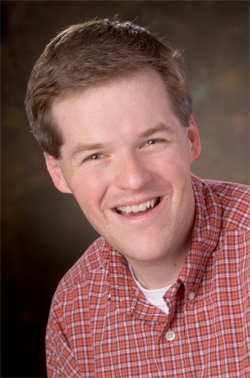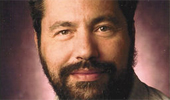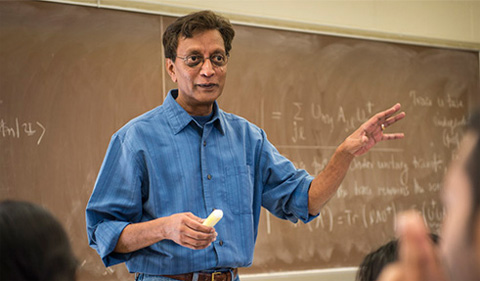Dr. Daniel Phillips, Professor of Physics and Astronomy, is giving an invited talk at the International Symposium on Nuclear Physics in Mumbai, India, from Dec. 2-6.
“In this talk, I will discuss recent work our group has undertaken to treat one- and two-neutron halos in effective field theory (EFT). We developed an EFT containing core and neutron degrees of freedom, which is built on the fact that the core has much smaller size than the distance at which the neutrons in these nuclei orbit that core. We used this approach to analyze the Coulomb dissociation of one-neutron halo nuclei (specifically: 11Be and 19C). I will first describe our analysis of 19C Coulomb dissociation data. There is a good separation of scales in this system because the last neutron in 19C is only weakly bound to the 18C nucleus. We obtained accurate values for this neutron-separation energy and the parameters that describe neutron-18C scattering by fitting the results of this EFT to experimental data on the Coulomb dissociation cross-section from the RIKEN facility in Japan. The extracted values were used to predict the longitudinal momentum distribution, which was compared to data taken at the National Superconducting Cyclotron Laboratory at Michigan State University.”
“I will then turn my attention to two-neutron halos. Here we analyzed the recent measurement of the matter radius of 22C, which showed it is a remarkably large nucleus: it’s almost as big as 208Pb, which contains 10 times as many neutrons and protons. By applying universal relations derived from EFT to 22C, and including estimates of higher-order EFT corrections in a treatment where 20C is an inert core (it is markedly smaller than 22C), we were able to put constraints on the poorly known values of the 22C two-neutron separation energy and n-20C virtual-state energy using this experimental datum. We found that the 22C two-neutron separation energy must be less than 100 keV, even after the quoted errors on the experimental datum and the theoretical uncertainty are accounted for. We also studied the implications of this result for the existence of bound excited Efimov states in the 22C system and found that the n-20C system needs to have a virtual state within a keV of threshold for such states to occur.”



















Comments